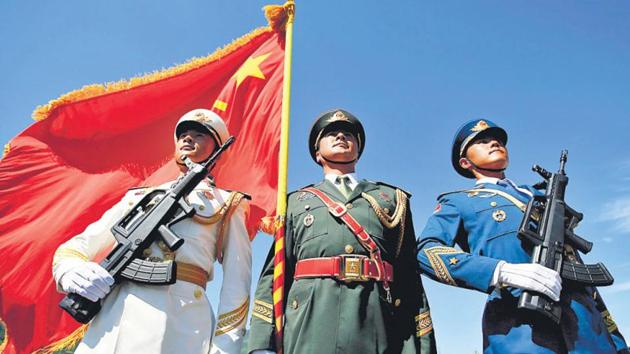Military reforms have put China’s combat capability way ahead of India’s
Following deep manpower reductions and a commensurate expansion in firepower, the PLA today stands better poised to wage a decisive war against India at low cost.
The latest announcement of the People’s Liberation Army (PLA) cutting its size by 50% is unsurprising yet consequential. This steep reduction brings about a structural transformation announced by President Xi Jinping and consistent with the military reforms introduced in 2015. The composition and disposition of Chinese military power today has changed significantly. The PLA’s transformation into a more streamlined fighting force has been nothing short of spectacular given the amount of internal bureaucratic and institutional resistance there was to bringing about a change in its force structure.

Chinese military power is aimed at defeating the adversary without actually engaging in active combat. In the event the latter does not occur, China would prefer subduing the opponent with overwhelming force at low cost. It corresponds roughly to the balance between attrition and manoeuvre. Given that the Chinese military was largely following the Second World War operational models, its overhaul was indeed deemed necessary by policymakers. The PLA’s experience of warfighting post Second World War did impress upon its leadership, particularly Deng Xiaoping, the importance of moving away from fighting debilitating wars that claimed the lives of too many fighting personnel.
Attrition warfare was the basis of the PLA’s war fighting principles. Notwithstanding a slowdown in recent years, double-digit economic growth has helped Beijing transform the PLA. Undergirding China’s military transformation is a political leadership under President Xi that has cut manpower-related flab, integrated theatre commands, instituted jointmanship in the form of combined arms warfare, and transformed the PLA into a technologically advanced fighting force. In addition, a general diminution of the size of the field army enables better offensive capabilities. More critically, it also elevates the importance of the other service arms relative to the ground fighting forces. This represents a significant shift, as the PLA was the most dominant of the three services historically. Clipping the size of the army also enables the other service arms to project military strength beyond China’s shores and land boundaries. Indeed, the reductions brought about by the Xi regime will crucially determine how effectively the Chinese military now wages war.
Military reforms undertaken by China will have far-reaching consequences for the balance of power in the Asia-Pacific and very specifically for India. Following deep manpower reductions and a commensurate expansion in firepower, the PLA today stands better poised to wage a decisive war against India at low cost. New Delhi’s challenge primarily lies in preventing such an outcome.
In the context of India’s at best uneven efforts to modernise its army, force planners have to seriously consider the trade-offs between firepower and manpower. As of today, the Indian Army, the largest of the three armed services, is a manpower-intensive fighting force. The missions and tasks it is condemned to include fighting insurgencies, which fundamentally require boots on the ground. Given that the personnel issue is the bane of the Indian Army, which the PLA has addressed almost completely, the defence budget of 2019 has significantly constrained the Indian Army’s capital budget. Second, the implementation of the One Rank One Pension (OROP) from 2014 leaves little for hardware modernisation or capital acquisitions. If the armed services were to undertake deep personnel reductions and become a more efficient fighting force, the army would be the most critical target for cutbacks. To be sure, the Indian Army chief General Bipin Rawat in informal and formal meetings in September and October 2018 with his military commanders did deliberate on the imperatives of undertaking a structural transformation of the Army. The potential changes cover agility, capacity to undertake conventional and hybrid warfare, a major restructuring of the army headquarters and giving the officer corps a lower age profile. With the PLA transforming itself, the Indian Army is still in the process of charting a way to transform its order of battle. Indian decision makers face two hard choices: either reduce the size of the Indian Army or significantly expand the defence budget to make up for shortfalls in firepower, logistics and military transportation.
It was in 2016, while addressing the Combined Commanders Conference, that Prime Minister Narendra Modi had called upon the military leadership to reform their “beliefs, doctrines, objectives and strategies”. He had touched upon key areas, including defence planning, enhancing jointness, manpower rationalisation, emphasising professional military education, restructuring higher defence management and the defence procurement process. Since then, while China has been able to accomplish much, India’s civilian and military bureaucracy has only been able to do what it does best: meander along without any clear focus, thereby effectively scuttling the prime minister’s vision of defence reforms. Unless defence reforms become a priority for India, the ability of Indian armed forces to fight future wars effectively will remain constrained.
Harsh V Pant is professor of international relations at King’s College London and head of the Strategic Studies Programme at Observer Research Foundation, New Delhi. Kartik Bommakanti is an associate fellow at the Observer Research Foundation, New Delhi
The views expressed are personal



